- Choosing the Right Nematanthus Variety
- 1. Light requirements:
- 2. Size:
- 3. Watering needs:
- 4. Flower color:
- 5. Growth habit:
- Light and Temperature Requirements
- Watering and Humidity Needs
- 1. Watering Frequency
- 2. Watering Technique
- 3. Drainage
- 4. Humidity
- 5. Avoiding Waterlogged Soil
- 6. Signs of Overwatering and Underwatering
- 7. Temperature Considerations
- Soil and Potting Mix Preparation
- 1. Choosing the Right Soil
- 2. Adding Organic Matter
- 3. Balancing pH Levels
- 4. Using a Pot with Drainage Holes
- 5. Sterilizing the Potting Mix
- 6. Mixing the Soil and Potting Mix
- Fertilizing and Feeding Schedule
- Types of Fertilizer
- Feeding Schedule
- Application Method
- Additional Tips
- Pruning and Propagation Techniques
- Pruning
- Propagation Techniques
- Pest and Disease Control
- Pests
- Diseases
- Tips for Displaying Nematanthus Plants
- 1. Choose the right location
- 2. Consider hanging baskets
- 3. Use decorative plant stands or shelves
- 4. Create a terrarium
- 5. Pair with contrasting foliage plants
- 6. Rotate the plants frequently
- 7. Keep in mind the plant’s size and growth habit
- Q&A:
- What is Nematanthus (Hypocyrtus)?
- How do I care for a Nematanthus plant?
- What kind of light does a Nematanthus plant need?
- How often should I water my Nematanthus plant?
- Can I use tap water to water my Nematanthus plant?
- How often should I fertilize my Nematanthus plant?
- Can I propagate a Nematanthus plant?
- Video: Gold Fish Plant Care: What to Know
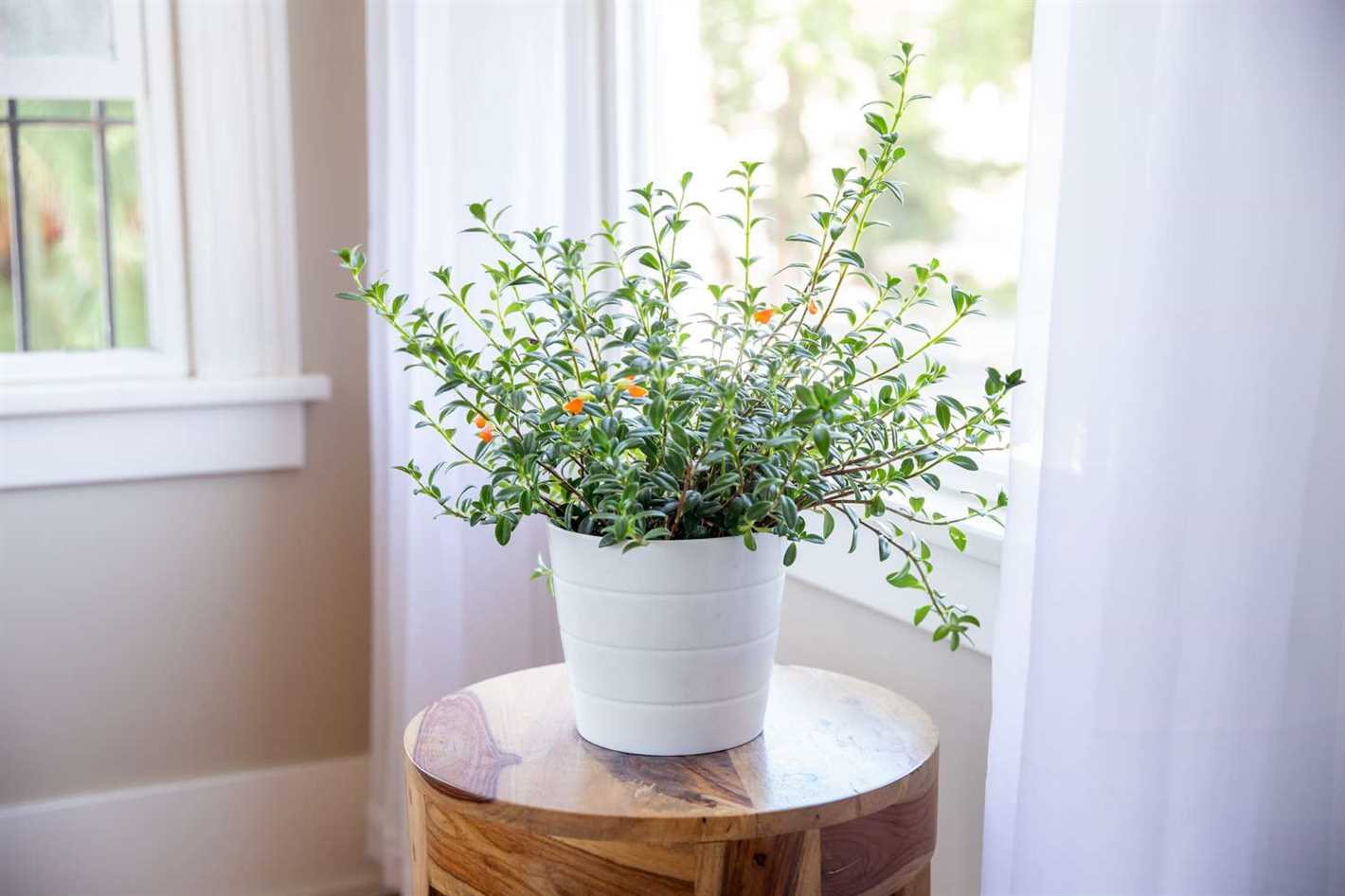
If you’re looking for a unique plant to add to your indoor garden, consider the Nematanthus, also known as Hypocyrtus. This tropical plant is native to Brazil and belongs to the Gesneriaceae family. With its brightly colored flowers and cascading vines, the Nematanthus is sure to add a touch of beauty to any space.
One of the key factors in successfully growing Nematanthus is providing the right amount of light. These plants thrive in bright, indirect light. Place them near a window with filtered sunlight or use artificial grow lights to provide the necessary light intensity. Avoid direct sunlight as it can scorch the leaves and flowers.
Another important aspect of care for Nematanthus is watering. These plants prefer to be kept consistently moist but not sitting in water. Water thoroughly when the top inch of soil feels dry to the touch, and be sure to provide good drainage to prevent root rot. Overwatering can lead to yellowing leaves and root issues, so it’s important to find the right balance.
Fertilizing is also an important part of caring for Nematanthus. Use a balanced, water-soluble fertilizer once a month during the growing season (spring and summer) to provide the necessary nutrients. Be sure to follow the instructions on the fertilizer package and avoid over-fertilizing, as this can damage the plant.
Lastly, regular pruning and grooming will help keep your Nematanthus looking its best. Pinch off wilted flowers and remove any yellow or dead leaves to promote new growth. You can also trim back the vines to control the size and shape of the plant. This will help to maintain a neat and compact appearance.
With the right care and attention, your Nematanthus will reward you with its vibrant blooms and lush foliage. Enjoy the beauty of this tropical plant in your indoor garden and create a stunning display for all to admire.
Choosing the Right Nematanthus Variety
When it comes to choosing a Nematanthus variety for your indoor garden, there are several factors to consider. Here are some tips to help you make the right choice:
1. Light requirements:
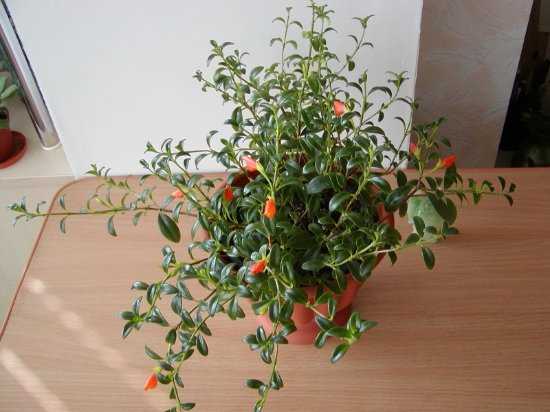

Consider the amount of light available in your indoor space. Some Nematanthus varieties, like the Nematanthus gregarius, thrive in bright, indirect light, while others, like the Nematanthus radicans, can tolerate lower light conditions.
2. Size:
Consider the size of your indoor space and how much room you have for your Nematanthus plant. Some varieties, like the Nematanthus gregarius, have a compact, bushy growth habit and are perfect for small spaces, while others, like the Nematanthus radicans, can grow larger and may require more space.
3. Watering needs:
Different Nematanthus varieties have varying watering needs. Some varieties, like the Nematanthus gregarius, prefer to dry out slightly between waterings, while others, like the Nematanthus radicans, prefer to be consistently moist. Consider your watering routine and choose a variety that aligns with it.
4. Flower color:
Consider the color of the flowers you prefer. Nematanthus varieties come in a range of flower colors, including orange, red, yellow, and combinations of these colors. Choose a variety with flowers that will complement your indoor space and personal preference.
5. Growth habit:
Consider the growth habit of the Nematanthus variety. Some varieties, like the Nematanthus copa, have a trailing growth habit and are perfect for hanging baskets, while others, like the Nematanthus gregarius, have an upright growth habit and are suitable for tabletops or shelves.
By considering these factors, you can choose the right Nematanthus variety for your indoor garden and ensure optimal growth and beauty of your plants.
Light and Temperature Requirements
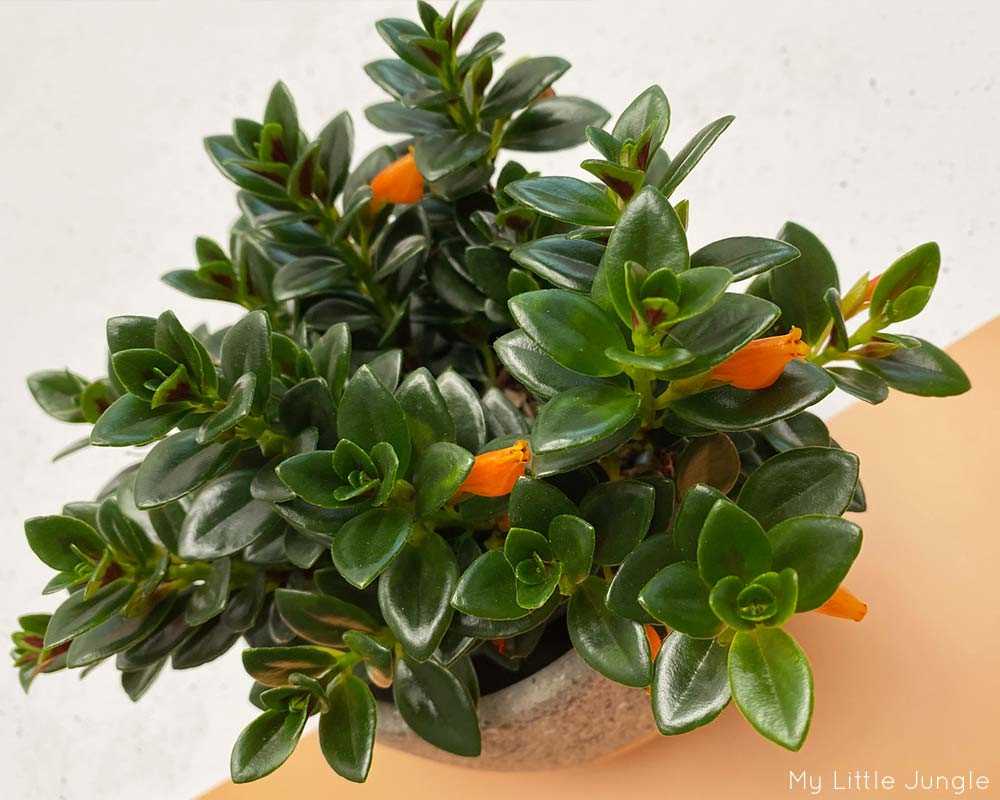

Nematanthus plants thrive in bright, indirect light. They prefer to be placed near a window or in a well-lit room where they can receive filtered sunlight throughout the day. Avoid placing them in direct sunlight as it can scorch their leaves.
These plants are also sensitive to temperature fluctuations. They prefer temperatures between 60°F to 80°F (15°C to 27°C). Avoid placing them near drafty windows, air conditioners, or heat sources as sudden temperature changes can stress the plant and lead to leaf drop.
If the temperature drops below 60°F (15°C) during the winter months, consider moving the plant to a slightly warmer location or using a plant heater to keep the temperature stable.
Overall, providing the right amount of light and maintaining a stable temperature will help your Nematanthus plant thrive and produce beautiful blooms.
Watering and Humidity Needs
Nematanthus plants have moderate water requirements, and it’s important to strike the right balance when watering. Overwatering can lead to root rot, while underwatering can cause the plant to wilt and suffer. Here are some watering tips for your Nematanthus plant:
1. Watering Frequency
Water your Nematanthus when the top inch of the soil feels dry to the touch. Stick your finger into the soil to check its moisture level. Depending on factors like temperature, humidity, and pot size, this usually translates to watering once every 7-10 days.
2. Watering Technique
When watering your Nematanthus, make sure to water the soil directly around the plant’s roots. Avoid getting water on the leaves, as this can lead to leaf spotting and fungal growth. Use a watering can or a narrow spout watering container to have better control over where the water goes.
3. Drainage
Good drainage is crucial for Nematanthus plants. Ensure that your pot has drainage holes at the bottom to allow excess water to escape. If your pot doesn’t have drainage holes, consider repotting your Nematanthus into a container that does.
4. Humidity
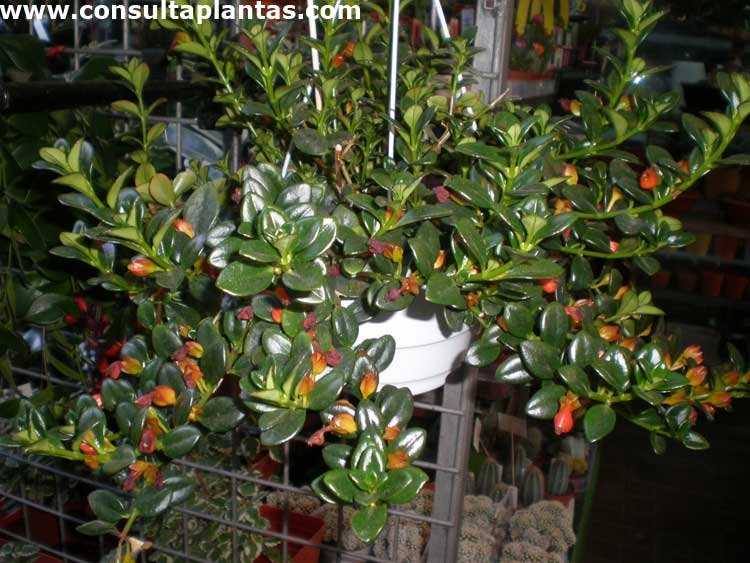

Nematanthus plants enjoy high humidity levels, but they can tolerate average household humidity. If your indoor environment is particularly dry, misting the leaves occasionally or placing a humidifier nearby can help increase humidity levels.
5. Avoiding Waterlogged Soil
To prevent waterlogged soil and root rot, make sure to empty any excess water that accumulates in the pot’s saucer or tray after watering. Leaving the plant sitting in water for prolonged periods can lead to root rot.
6. Signs of Overwatering and Underwatering
Overwatered Nematanthus plants may show signs such as yellowing leaves, wilting, or a strong musty smell. Underwatered plants may have dry, crispy leaves or drooping foliage. Adjust your watering routine accordingly based on these signs.
7. Temperature Considerations
Avoid watering your Nematanthus with cold water, as this can shock the roots. Use room temperature water or let tap water sit for a few hours before watering to allow it to reach room temperature.
Following these watering tips will help ensure that your Nematanthus plant thrives and remains healthy in your indoor garden.
Soil and Potting Mix Preparation
When it comes to growing Nematanthus plants, the soil and potting mix play a crucial role in their overall health and growth. Here are some tips for preparing the right soil and potting mix for your indoor gardening needs.
1. Choosing the Right Soil
It is important to choose a well-draining soil that retains moisture without becoming waterlogged. You can use a pre-made potting mix that is specifically formulated for indoor plants or create your own by mixing equal parts of peat moss, perlite, and vermiculite.
2. Adding Organic Matter
Adding organic matter to the soil can improve its nutrient content and water retention capabilities. You can incorporate organic matter such as compost, well-rotted manure, or leaf mold into the potting mix. This will provide a steady supply of nutrients to your Nematanthus plants.
3. Balancing pH Levels
Nematanthus plants prefer slightly acidic to neutral soil with a pH range of 6.0 to 7.0. You can test the pH level of your soil using a pH meter or a testing kit. If the pH is too high or too low, you can adjust it by adding lime to raise the pH or sulfur to lower it.
4. Using a Pot with Drainage Holes
Ensure that the pot you choose for your Nematanthus plant has good drainage holes at the bottom. This will prevent water from accumulating in the pot and causing root rot. Excess water should be able to drain freely from the pot.
5. Sterilizing the Potting Mix
Before using the potting mix, it is important to sterilize it to eliminate any harmful pathogens or insects. This can be done by baking the potting mix in the oven at 180°C (350°F) for about 30 minutes or by microwaving it on high for 5-10 minutes. Let the potting mix cool down before using it.
6. Mixing the Soil and Potting Mix
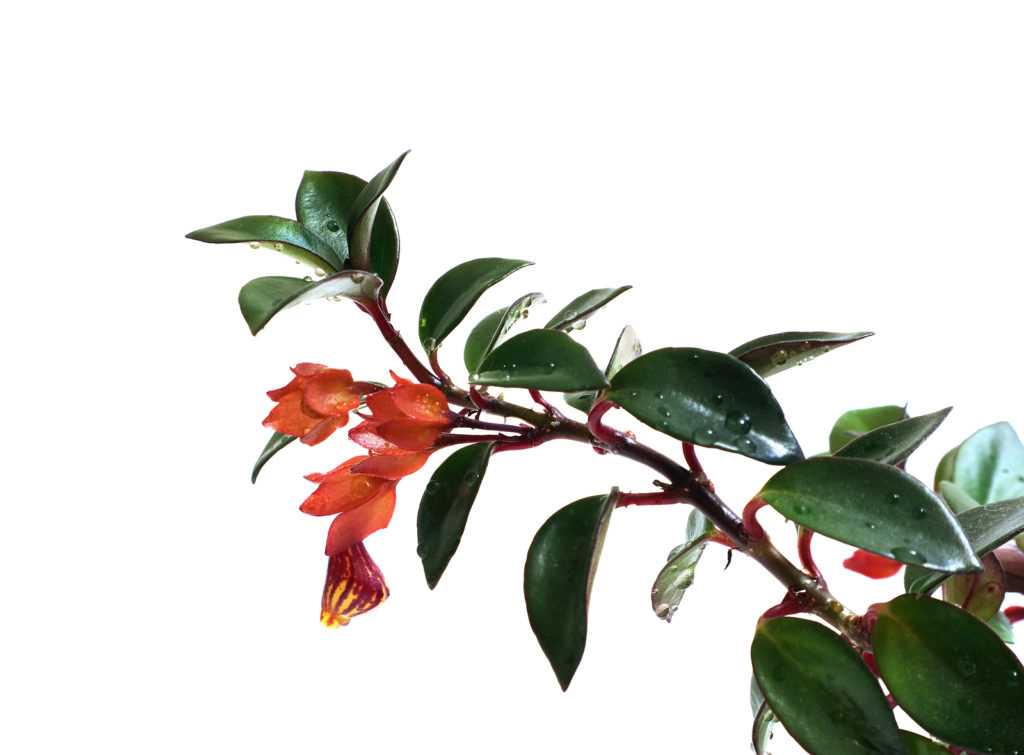

Once you have prepared the potting mix and chosen the right soil, combine the two in a large container or bucket. Mix them thoroughly to distribute the nutrients evenly. This will ensure that your Nematanthus plants receive the necessary nutrients for optimal growth.
By following these tips for soil and potting mix preparation, you can provide the ideal growing conditions for your Nematanthus plants, leading to healthy and vibrant growth.
Fertilizing and Feeding Schedule
Fertilizing is an important aspect of caring for your Nematanthus plant. It provides essential nutrients that help promote healthy growth and vibrant foliage. Here are some tips on fertilizing and a feeding schedule to follow:
Types of Fertilizer
When it comes to fertilizing your Nematanthus plant, you have a few options:
- Organic fertilizers: These are derived from natural sources and are slower to release nutrients.
- Synthetic fertilizers: These are chemically formulated and provide a quick nutrient boost to the plant.
Both types of fertilizers can work well for Nematanthus plants. Choose the one that suits your preferences and follow the instructions on the label for application rates.
Feeding Schedule
During the growing season, which typically begins in spring and lasts until early fall, you should feed your Nematanthus plant every two weeks. Use a balanced fertilizer with a ratio of equal parts nitrogen, phosphorus, and potassium.
During the dormant period in winter, you can reduce the frequency of feeding to once a month or stop altogether. It’s important to allow the plant to rest during this time.
Application Method
When applying fertilizer to your Nematanthus plant, it’s best to dilute it to half strength to avoid burning the roots. You can use a watering can or a spray bottle to apply the fertilizer directly to the soil.
Make sure to water the plant thoroughly after applying the fertilizer to help distribute the nutrients evenly. Avoid fertilizing a dry plant, as it can cause root damage.
Additional Tips
Here are some additional tips to keep in mind when fertilizing your Nematanthus plant:
- Always follow the instructions on the fertilizer label for the correct application rates.
- Avoid over-fertilizing, as it can lead to nutrient burn and harm the plant.
- Regularly flush the soil with water to prevent salt build-up from excessive fertilization.
- Monitor the plant’s response to the fertilizer and adjust the feeding schedule if needed.
By following this fertilizing and feeding schedule, you can ensure that your Nematanthus plant receives the nutrients it needs to thrive and flourish indoors.
Pruning and Propagation Techniques
Pruning


Pruning is an important part of caring for your Nematanthus plant. It helps maintain the shape and size of the plant, promotes healthy growth, and encourages the development of new branches and flowers. Here are some tips for pruning your Nematanthus:
- Timing: Prune your Nematanthus during its active growing season, which is typically in spring or early summer. Avoid pruning during winter when the plant is dormant.
- Tools: Use a clean and sharp pair of pruning shears or scissors to make clean cuts.
- Dead or damaged parts: Remove any dead or damaged leaves, stems, or flowers. This not only keeps the plant healthy, but also improves its appearance.
- Shape and size: If you want to maintain a specific shape or size for your Nematanthus, prune the branches accordingly. You can trim back the top growth to encourage branching and promote a bushier appearance.
- Propagation: Pruning also offers the opportunity to propagate your Nematanthus by taking stem cuttings, which is discussed in the next section.
Propagation Techniques
Propagating a Nematanthus is relatively easy and can be done through stem cuttings. Here’s how:
- Selecting a stem: Look for a healthy stem that is at least 4-6 inches long. Choose a stem that has several nodes (where the leaves emerge) as these are the areas where the roots will develop.
- Cutting the stem: Use a clean and sharp knife or pair of scissors to make a diagonal cut just below a node. Make sure the cutting is long enough to have at least two nodes.
- Preparing the cutting: Remove the lower leaves from the cutting, leaving a few leaves at the top. This reduces moisture loss and directs energy towards root development.
- Rooting the cutting: Place the cutting in a container filled with moist potting mix or a glass of water. Keep the cutting in a warm and bright location, but avoid direct sunlight. Mist the cutting regularly to maintain humidity.
- Root development: After a few weeks, roots should start to develop. Once the roots are about an inch long, you can transplant the cutting into a small pot filled with well-draining soil.
- Nurturing the new plant: Place the new plant in a bright location, but again, avoid direct sunlight. Keep the soil consistently moist, but not waterlogged, and provide the necessary care for your new Nematanthus plant.
By following these pruning and propagation techniques, you can keep your Nematanthus plant well-maintained and expand your collection with new plants.
Pest and Disease Control
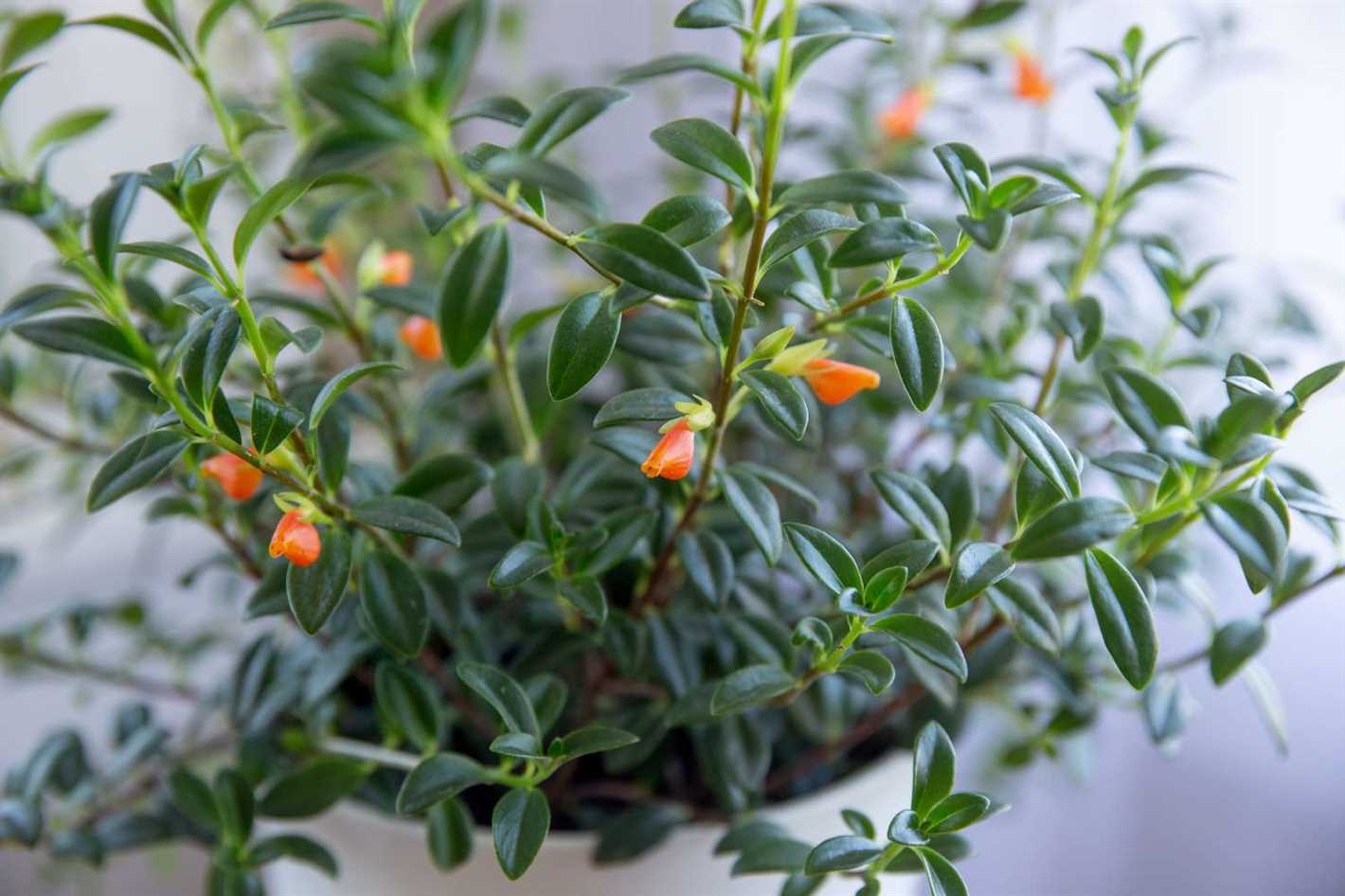

Nematanthus plants are generally pest-resistant, but they can still be susceptible to certain pests and diseases. Here are some common issues that you might encounter and tips on how to control them:
Pests
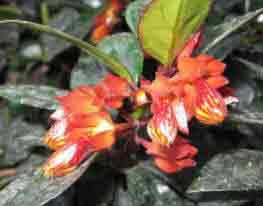

- Aphids: These small insects often gather on the underside of leaves and suck out the plant’s sap. To control aphids, you can manually remove them with a cotton swab dipped in soapy water or use insecticidal soap.
- Spider mites: These pests are tiny and can cause yellowing or stippling on the leaves. To control spider mites, use a mixture of water and neem oil and spray it on the affected leaves. You can also increase humidity around the plant to deter spider mites.
- Mealybugs: Mealybugs are small, white, fluffy insects that feed on plant sap. You can control them by wiping them off with a cotton swab dipped in rubbing alcohol or using insecticidal soap.
- Scale insects: Scale insects are small, flat, and often appear as brown or yellow bumps on the leaves. You can control them by gently scraping them off or using insecticidal soap.
Diseases
- Root rot: This disease is caused by overwatering or poorly draining soil. To prevent root rot, make sure the soil is well-draining and water the plant only when the top inch of soil feels dry.
- Powdery mildew: Powdery mildew appears as a white powdery coating on the leaves. To control it, remove affected leaves and improve air circulation around the plant. You can also use a fungicide specifically formulated for powdery mildew.
- Leaf spot: Leaf spot is characterized by dark spots or patches on the leaves. It is caused by a fungal or bacterial infection. To control leaf spot, remove affected leaves and avoid overhead watering.
Regularly inspecting your Nematanthus plant and taking prompt action at the first sign of pests or diseases can help keep it healthy and thriving.
Tips for Displaying Nematanthus Plants
Once you have successfully cared for your Nematanthus plants, it’s time to think about how to display them in your indoor space. Here are a few tips to help you showcase the beauty of your Nematanthus plants:
1. Choose the right location
Place your Nematanthus plants in a location that receives bright, indirect sunlight. These plants thrive in natural light but can also tolerate some shade. Avoid placing them in direct sunlight, as it can scorch their delicate leaves.
2. Consider hanging baskets
Nematanthus plants look stunning when displayed in hanging baskets. Their trailing, vine-like growth habit is beautifully showcased when hung from the ceiling or mounted on a wall. Hanging baskets also help save space in smaller rooms.
3. Use decorative plant stands or shelves
If you prefer to display your Nematanthus plants on a flat surface, consider using decorative plant stands or shelves. This not only adds a touch of elegance to your indoor space but also elevates the plants, allowing their foliage to cascade gracefully.
4. Create a terrarium
Nematanthus plants can also thrive in a terrarium setup. Fill a glass container with well-draining soil and arrange the plants in a visually appealing manner. The transparent walls of the terrarium will not only protect the plants but also create a stunning display piece.
5. Pair with contrasting foliage plants
Create an eye-catching display by combining your Nematanthus plants with other foliage plants that have contrasting leaf shapes, sizes, and colors. This will add visual interest and make your indoor garden more dynamic.
6. Rotate the plants frequently
To ensure even growth and prevent leaning towards the light source, rotate your Nematanthus plants every few weeks. This will help them receive balanced light and maintain a more symmetrical shape.
7. Keep in mind the plant’s size and growth habit
Consider the mature size and growth habit of your Nematanthus plants when choosing their display location. Make sure you provide enough space for the plants to spread and trail without crowding or overshadowing other plants.
By following these tips, you can create an attractive display for your Nematanthus plants that adds beauty and greenery to your indoor space.
Q&A:
What is Nematanthus (Hypocyrtus)?
Nematanthus (Hypocyrtus) is a flowering plant that belongs to the family Gesneriaceae. It is commonly known as the ‘Goldfish Plant’ due to its unique flowers that resemble goldfish.
How do I care for a Nematanthus plant?
Caring for a Nematanthus plant involves providing it with bright indirect light, watering it regularly to keep the soil slightly moist, and misting it occasionally to increase humidity. It is also important to fertilize the plant every month during the growing season and to prune it to maintain its shape.
What kind of light does a Nematanthus plant need?
A Nematanthus plant thrives in bright indirect light. It should not be exposed to direct sunlight, as it can cause the leaves to burn.
How often should I water my Nematanthus plant?
It is important to keep the soil of a Nematanthus plant slightly moist at all times. This typically requires watering it every few days. However, it is important to check the moisture of the soil before watering, as overwatering can lead to root rot.
Can I use tap water to water my Nematanthus plant?
Using tap water to water a Nematanthus plant is generally fine, as long as the water is not too hard or chlorinated. If your tap water is heavily chlorinated, it is recommended to let it sit out overnight before using it to water your plant.
How often should I fertilize my Nematanthus plant?
It is recommended to fertilize a Nematanthus plant every month during the growing season, which is typically spring and summer. Be sure to dilute the fertilizer to half strength before applying it to the plant.
Can I propagate a Nematanthus plant?
Yes, you can propagate a Nematanthus plant through stem cuttings. Simply take a 4-6 inch long cutting from the tip of a healthy stem, remove the lower leaves, and place the cutting in a pot with moist soil. Keep the soil evenly moist and provide the cutting with bright indirect light until it establishes roots.
Video:
Gold Fish Plant Care: What to Know







